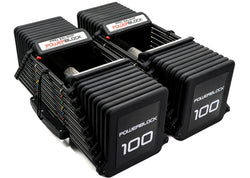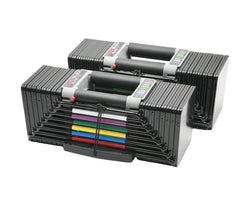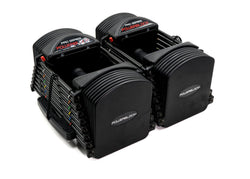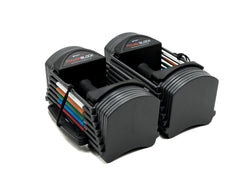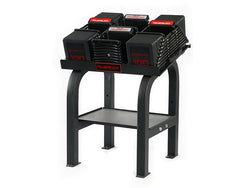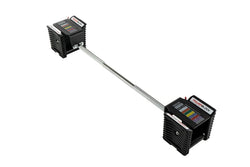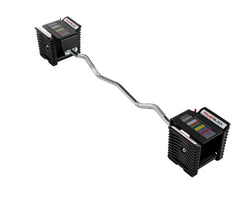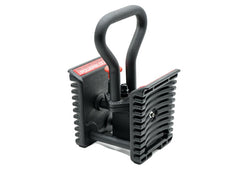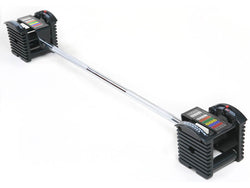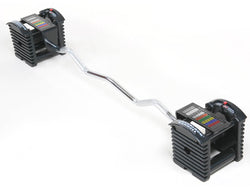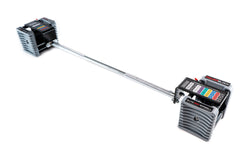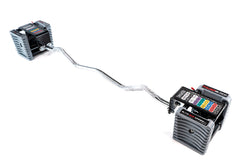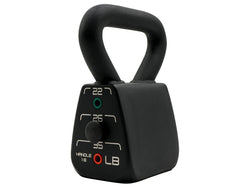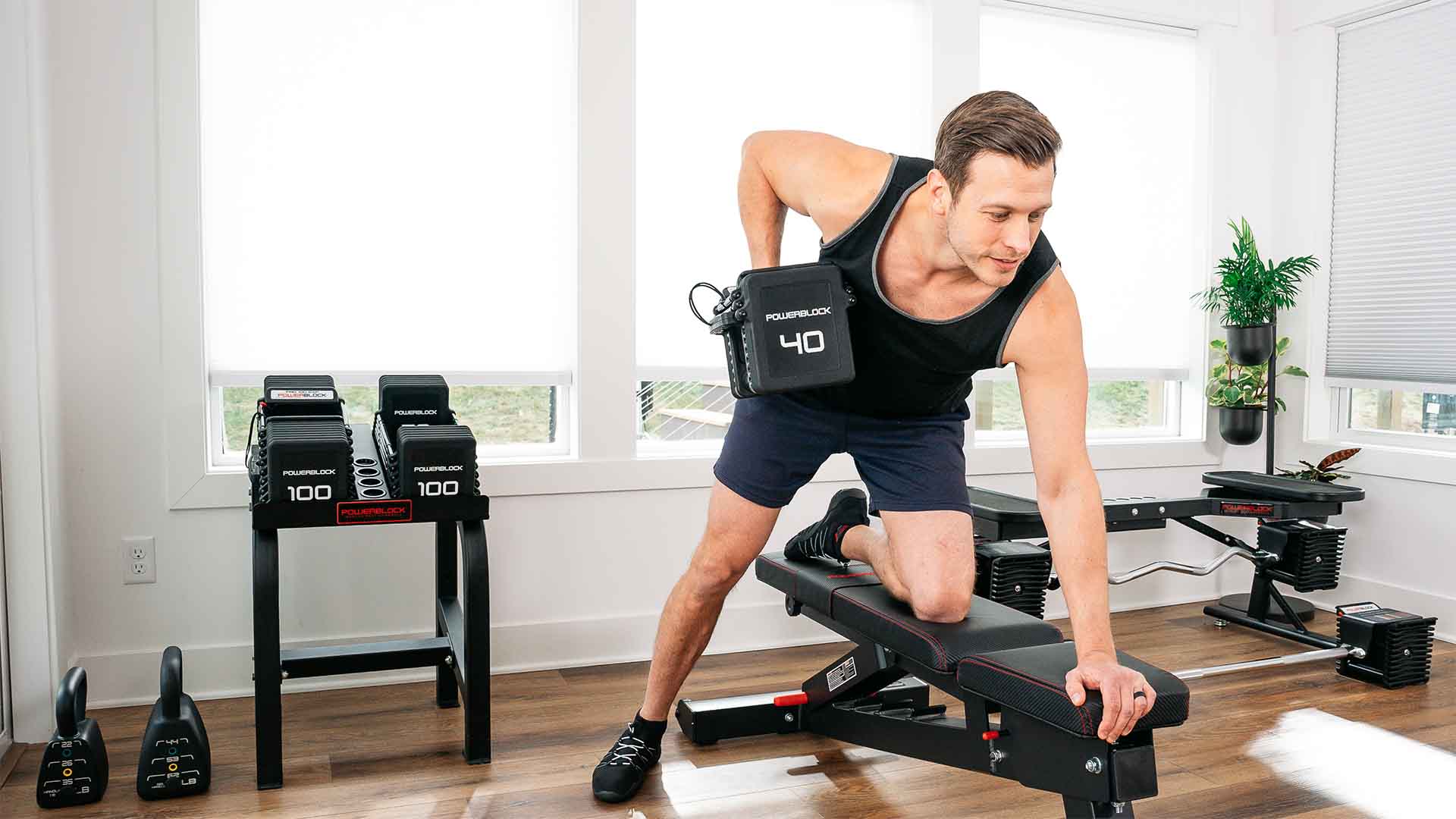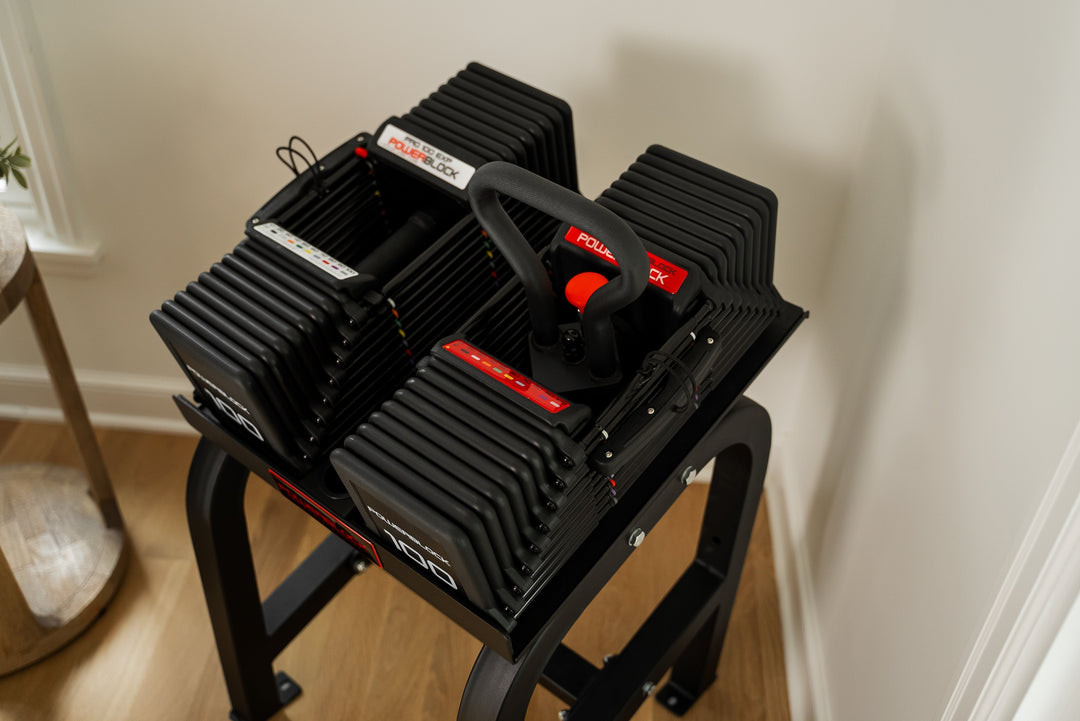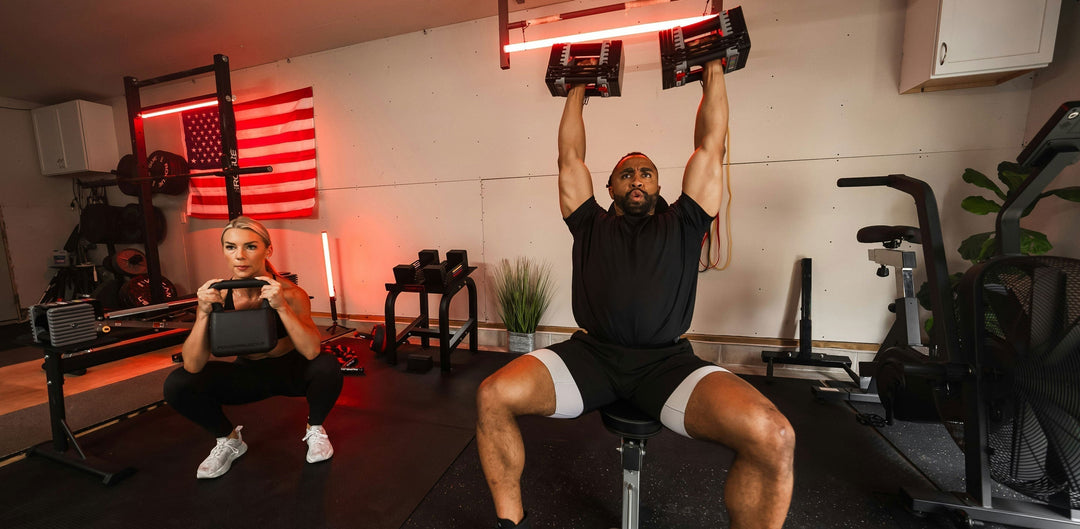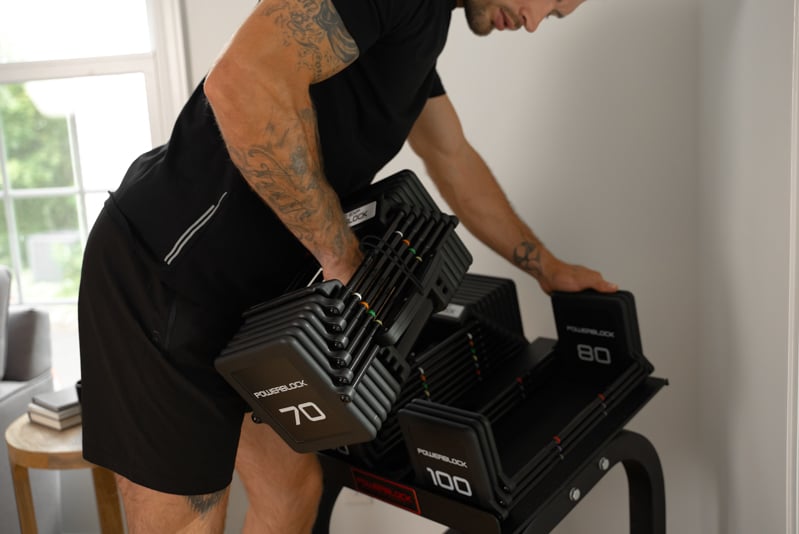While training each body part or muscle group is a great way to train, you may not be able to complete three or more workouts in a week. This is where full-body training comes into play.

Fully Body Workouts with Just Dumbbells?
Taking a whole-body approach to training is perfect for individuals who want to train but have time constraints, as it is a great way to stay active. Choosing the right movements and understanding how each muscle moves is key to understanding a full-body workout.
Steps for Success
Picking the right movements for this type of workout is just the first step. The next steps will make your workout a success:
Step 1: Know your Body
Understanding your strength limits and how your body moves is what matters most in training.
-
Knowing how strong you are allows you to warm up with the proper weight and helps you challenge yourself to get stronger throughout your workout. It gives the difference between training to failure and just lifting weights. Experimenting with how heavy you go may take some time, but it will be worth it in the long run.
-
Knowing how your body moves allows you to pick the right movements and manipulate them for proper form. Take a goblet squat, for example. You may not get the full range of motion in this movement if your feet are flat on the floor, but by just elevating your heels with 2.5lb plates or wedges will allow you to get full knee bend to fully activate your quads.
Step 2: Controlling the Weight
Controlling weight is a big part of training safely. It allows you to keep proper form and focus on the muscles activated in the movement. This is important during the positive and negative range of any movement
-
The Positive range of a movement is when you’re bringing the target muscle into its flexed position. With the goblet squat, you are standing up.
-
The negative range is when you’re bringing the target muscle into its stretched position. For the goblet squat, it’s when you’re going down, bending your knees and hips.
For both of these ranges, timing is key. When you’re going through the negative range, your goal is for it to take 2-3 seconds to get into your squatted position for the goblet squat. For the positive, you should be able to explode into the standing position, taking approximately 1-2 seconds.

Creating a Full Body Workout
Our goal will be to hit each muscle with one exercise in this workout, so we are primarily going to be focusing on compound, or multi-joint movements, meaning that for each movement we do, at least two joints will be moving during the movement.
Upper Body
For our upper body, we’ll be doing a pushing movement and a pulling movement. Engaging the chest, shoulder, and triceps for our pushing movements and our back, shoulders, and biceps for our pulling movements.
Pushing Movement
Our Pushing Movement will be a standard dumbbell bench press. If you don't have a bench to use, you can also do a floor chest press.
-
Get in position: Lie down on a flat bench with a dumbbell in each hand. Hold the dumbbells at your chest with your palms facing your feet and your elbows bent.
-
Press the weights up: Push the dumbbells up toward the ceiling until your arms are straight. Keep your feet flat on the floor and your back flat on the bench.
-
Lower the weights slowly: Bring the dumbbells back down to your chest with control. Then repeat!


Pulling Movement
Our Pulling Movement will be the bent-over row, done bilaterally, meaning both arms will be pulling a single dumbbell at the same time.
-
Get into position: Stand with your feet shoulder-width apart. Hold a dumbbell in each hand. Bend your knees a little and lean forward at your hips, keeping your back straight. Let the dumbbells hang in front of you with your arms straight.
-
Pull the weights up: Pull the dumbbells up toward your sides. Squeeze your shoulder blades together as you lift. Keep your elbows close to your body.
-
Lower the weights slowly: Lower the dumbbells back down with control. Keep your back flat and repeat.

Lower Body
We will have two lower-body movements for our legs: a squat and a deadlift. The squat will target our quads and glutes, while the deadlift will target our hamstrings and glutes.
Quads & Glutes
For our squatting movement, we’ll be performing a dumbbell goblet squat. As we discussed above, if you’re having a hard time getting your knees to fully bend, try adding a 2.5lb plate or squat wedges to get the full range of motion.
-
Hold the weight: Hold one dumbbell or kettlebell close to your chest with both hands. Stand with your feet a little wider than your shoulders and your toes pointing slightly out.
-
Squat down: Bend your knees and push your hips back like you’re sitting in a chair. Keep your chest and your back straight. Go as low as you can while keeping good form.
-
Stand back up: Push through your heels to stand up tall. Keep holding the weight at your chest and repeat.

Hamstring & Glutes
Our glute and hamstring movement will be a stiff-legged deadlift. Hinge at the hips, keep the lower back straight, push the glutes back for a good stretch, engaging muscles as you stand.
-
Stand and hold the weights: Hold a dumbbell in each hand in front of your legs. Stand with your feet hip-width apart and keep a slight bend in your knees.
-
Lower the weights: Bend at your hips and lower the dumbbells toward the ground. Keep your back straight and let the weights stay close to your legs.
-
Return to standing: Push through your heels and lift your chest to stand back up. Squeeze your glutes at the top and repeat.

Accessories
Accessory movements are movements that focus on supporting muscles for our bigger upper body compound movements. Dumbbell bicep curls, dumbbell triceps extensions, and dumbbell lateral raises are going to be our three accessory movements.
Dumbbell Biceps Curl
Our first accessory movement will be the dumbbell biceps curl. Your biceps help stabilize the shoulder as you perform a row or other pulling movements for your back. Strengthening the biceps will help increase your strength in back movements.
-
Stand tall and hold the weights: Hold a dumbbell in each hand with your arms at your sides and palms facing forward.
-
Curl the weights up: Bend your elbows and lift the dumbbells toward your shoulders. Keep your elbows close to your body.
-
Lower the weights slowly: Bring the dumbbells back down with control. Then repeat.

Overhead Triceps Extensions
Our next accessory movement will be the triceps overhead extension. This movement puts the triceps in a fully stretched position, allowing for a greater muscle contraction in the flexed position.
-
Hold the weight overhead: Grab one dumbbell with both hands and lift it above your head. Keep your arms straight and elbows close to your ears.
-
Lower the weight behind your head: Bend your elbows to lower the dumbbell behind your head slowly. Keep your upper arms still.
-
Raise the weight back up: Straighten your arms to lift the dumbbell back over your head. Then repeat.

Dumbbell Lateral Raise
Our last accessory movement will be a dumbbell lateral raise. With our bench press and row working the front and back portion of the shoulder, we’ll need to hit the side portion on its own.
-
Stand tall and hold the weights: Hold a dumbbell in each hand at your sides with your palms facing your body. Stand with a slight bend in your elbows.
-
Lift the weights out to the sides: Raise the dumbbells out to shoulder height, like you're spreading your wings. Keep your arms slightly bent and don’t shrug your shoulders.
-
Lower the weights slowly: Bring the dumbbells back down with control. Then repeat.

The Workout
For the workout, you’ll have two options. Option one is performing the prescribed sets and reps, one movement at a time. Option 2 is to perform this in a circuit style, performing each movement consecutively for a total of 3 rounds. For your warm-up, go check out our Warm-Up & Cool-Down blog article. For each set or round of this workout, increase the weight you’re moving after each set or round. Your goal is to reach muscle failure within the prescribed rep ranges.
Workout Option 1: Straight Sets
|
Full Body Workout |
Sets |
Reps |
|
Dumbbell Bench or Floor Press |
3 |
8-12 |
|
Bent Over Dumbbell Row |
3 |
8-12 |
|
Goblet Squat |
3 |
8-12 |
|
Dumbbell Stiff-Legged Deadlift |
3 |
8-12 |
|
Dumbbell Biceps Curl |
3 |
8-12 |
|
Dumbbell Triceps Extensions |
3 |
8-12 |
|
Dumbbell Side Lateral Raise |
3 |
8-12 |
*Reminder: Increase the weight after every set. Your goal is to hit muscle failure within the prescribed reps.
Workout Option 2: Circuit Training
Complete 3 Rounds. After each round, rest for 2 minutes before starting the next.
|
Full Body Workout |
Reps |
|
Dumbbell Bench or Floor Press |
8-12 |
|
Bent Over Dumbbell Row |
8-12 |
|
Goblet Squat |
8-12 |
|
Dumbbell Stiff-Legged Deadlift |
8-12 |
|
Dumbbell Biceps Curl |
8-12 |
|
Dumbbell Triceps Extensions |
8-12 |
|
Dumbbell Side Lateral Raise |
8-12 |
*Reminder: Increase the weight after every round. Your goal is to hit muscle failure within the prescribed reps.
Tracking Progress
You don’t need to measure your muscles after every workout, but setting goals and tracking your progress is a good way to stay motivated and encouraged during the workout process. Get a notebook or download a workout tracking app so you can see your strength increase as time goes on.
Finding the right set of dumbbells is also important. PowerBlock has a variety of adjustable dumbbells, some of which are expandable up to 45 kg,, and all of which are built to replace multiple sets of traditional dumbbells. Looking for even more workout options? PowerBlock also offers kettlebells, straight and curl bars, and more for you to build out your gym and add variety to your workouts.
